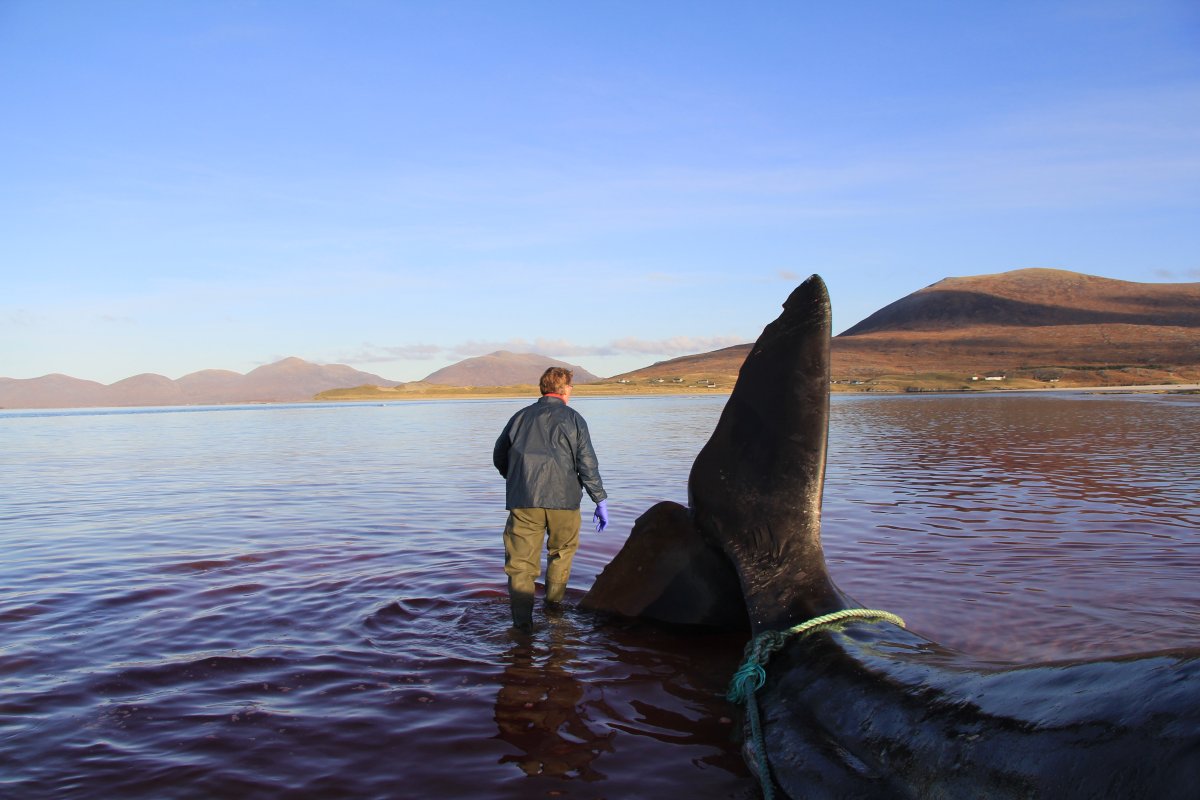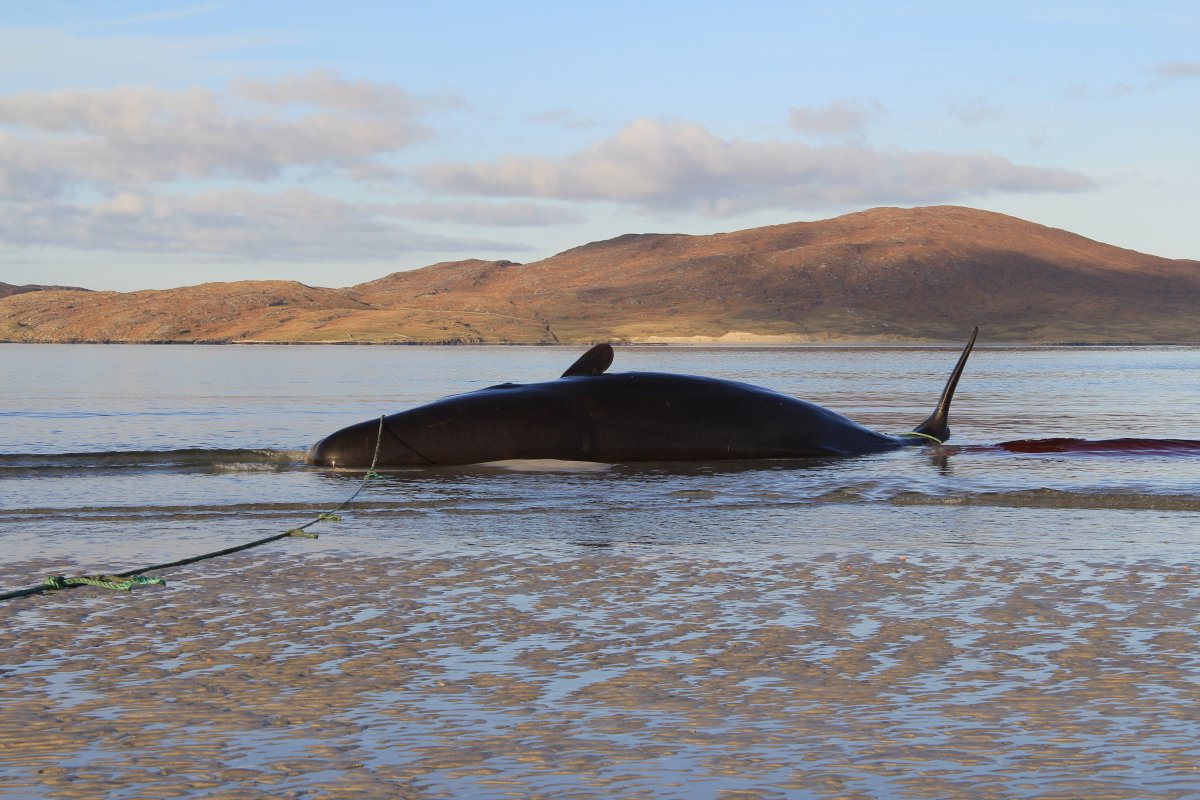Warning: Some images in this story are graphic and may be disturbing to some viewers. Discretion is advised.

A young sperm whale found stranded on the shore of a Scottish island had a 220-pound ball of plastic in its stomach when it died.
The beached whale was discovered on Seilebost beach on the Isle of Harris on Thursday, according to the Scottish Marine Animal Stranding Scheme (SMASS), which collates data from stranded marine animals around Scotland. It had already been dead for about 48 hours.
When SMASS workers began a necropsy, dissecting the whale on the shore, they discovered “a whole range of plastic” tangled into a ball and nestled inside the whale’s gut.
“Including sections of net, bundles of rope, plastic cups, bags, gloves, packing straps and tubing,” the organization wrote in a post on its Facebook page.
“All this material was in a huge ball in the stomach and some of it looked like it had been there for some time.”
While there was no evidence to prove the waste obstructed the whale’s intestines, the organization said it’s “certainly plausible” the amount of debris was a factor in it becoming stranded.
“This amount of plastic in the stomach is nonetheless horrific, must have compromised digestion, and serves to demonstrate, yet again, the hazards that marine litter and lost or discarded fishing gear can cause to marine life,” they wrote.
“It is also perhaps a good example that this is a global issue caused by a whole host of human activities.”
With help from the local coast guard and a disposal team, the whale was buried where it was found, as there was no way to move the 20-tonne whale elsewhere.

The experts believe the debris the whale ingested was both from land and fishing sectors and could have been swallowed at any point between Norway and the Azores, an autonomous region of Portugal.
A few days after the young whale washed up, a local man cleared a “massive tangle of fishing-related rope and net” from a beach nearby.
“Every day when we walk along the beach we pick up debris, but sadly we rarely see anyone else picking anything up,” a post on the Luskentyre Beach – Isle of Harris Facebook page says.
“Debris in our oceans is everyone’s problem. The fishing industry needs to do better, but equally, we all need to do more.”
According to SMASS data, 2018 was a record year for marine strandings, with more than 930 cases reported.
However, the organization attributed the spike, in part, to an “improved effort” by citizens to alert them to dead or beached animals, they told BBC in January.










Comments